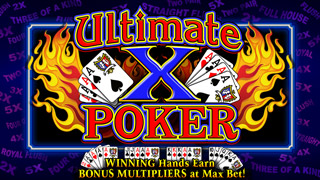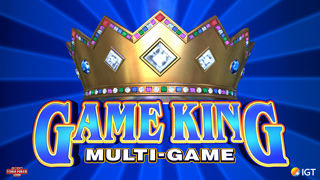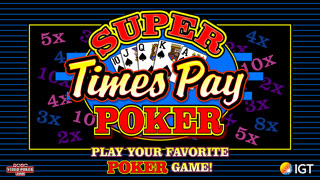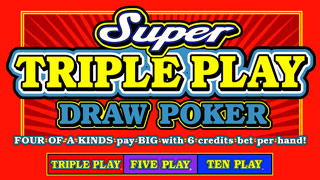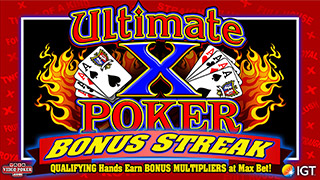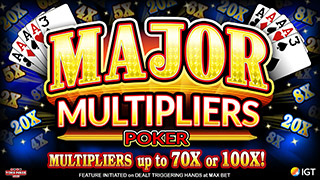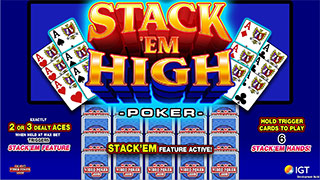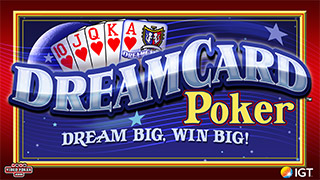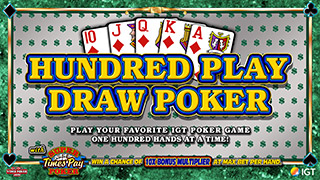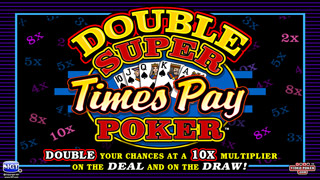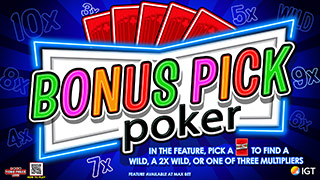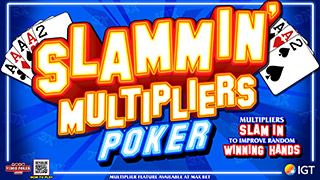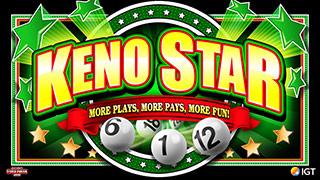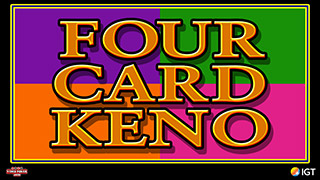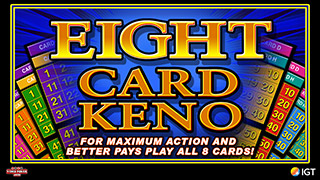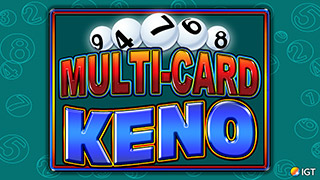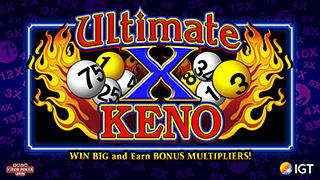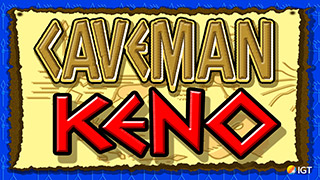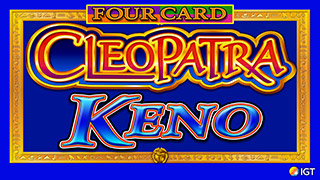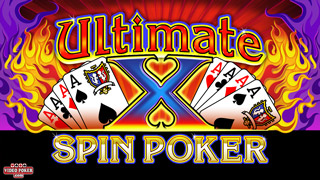Multimeter Progressive - Team Play
-
New2vp
- Video Poker Master
- Posts: 1878
- Joined: Mon Sep 11, 2006 4:02 am
Multimeter Progressive - Team Play
Frank, how did you set strategy trigger points for team members when there were multiple progressives? Consider, for example, a Double Bonus 4-way (or more-way) progressive that you had determined was an acceptable play when there were progressives on at least both the royal and quad aces. When there was a decision hand that held, say, both JT suited and an ace in another suit, what guidance did the strategy charts give? A higher royal progressive would make the JT more valuable; a higher
quad-ace progressive would make the ace a more valuable hold. Both affect the calculation involving which is the better draw (heck, even the level of the quad 2-4 progressives has a tiny influence, since it is possible to get four deuces, treys, or fours when holding the ace, but not when holding JT; continuing into minutia, a higher value on quad 5-K favors JT over A). And this example brings into play both flush and straight penalties on both potential holds.Certainly, depending on the current level of both progressives, one could determine with software or extreme mental gymnastics which of the two holds was better, but how was this set up in such a way that all the members of a team would have guidance as to the correct strategy play? (If your teams never played multiple progressives, then how WOULD you have tackled this situation if they had?)Please do not feel constrained by my example if you have better ones to use. Possibly other examples of competing holds or different video poker games might be better at suggesting a general method that would be appropriate for giving guidance to people without off-the-chart genius IQs.
quad-ace progressive would make the ace a more valuable hold. Both affect the calculation involving which is the better draw (heck, even the level of the quad 2-4 progressives has a tiny influence, since it is possible to get four deuces, treys, or fours when holding the ace, but not when holding JT; continuing into minutia, a higher value on quad 5-K favors JT over A). And this example brings into play both flush and straight penalties on both potential holds.Certainly, depending on the current level of both progressives, one could determine with software or extreme mental gymnastics which of the two holds was better, but how was this set up in such a way that all the members of a team would have guidance as to the correct strategy play? (If your teams never played multiple progressives, then how WOULD you have tackled this situation if they had?)Please do not feel constrained by my example if you have better ones to use. Possibly other examples of competing holds or different video poker games might be better at suggesting a general method that would be appropriate for giving guidance to people without off-the-chart genius IQs.
-
jm002546
- Senior Member
- Posts: 398
- Joined: Tue Oct 02, 2007 9:13 am
Frank, do you resent Bob Dancer for hurting AP while helping himself? Bet this woke you up!!!!!!
-
Frank Kneeland
- VP Veteran
- Posts: 762
- Joined: Wed Feb 02, 2011 6:59 pm
Frank, how did you set strategy trigger points for team members when there were multiple progressives? Consider, for example, a Double Bonus 4-way (or more-way) progressive that you had determined was an acceptable play when there were progressives on at least both the royal and quad aces. When there was a decision hand that held, say, both JT suited and an ace in another suit, what guidance did the strategy charts give? A higher royal progressive would make the JT more valuable; a higher
quad-ace progressive would make the ace a more valuable hold. Both affect the calculation involving which is the better draw (heck, even the level of the quad 2-4 progressives has a tiny influence, since it is possible to get four deuces, treys, or fours when holding the ace, but not when holding JT; continuing into minutia, a higher value on quad 5-K favors JT over A). And this example brings into play both flush and straight penalties on both potential holds.Certainly, depending on the current level of both progressives, one could determine with software or extreme mental gymnastics which of the two holds was better, but how was this set up in such a way that all the members of a team would have guidance as to the correct strategy play? (If your teams never played multiple progressives, then how WOULD you have tackled this situation if they had?)Please do not feel constrained by my example if you have better ones to use. Possibly other examples of competing holds or different video poker games might be better at suggesting a general method that would be appropriate for giving guidance to people without off-the-chart genius IQs.What a great question to ask me. This might be the most targeted to my experience question anyone has ever asked me. I covered all the basic concepts one needs to make the best play in this situation in my book, I may not have provided such a good example though.There won't be space here to provide all the mathematical reasons, but here's the bottom line and how you should approach the question:1. In the absence of competition (locking up all the seats, individual machine, late at night with no one else playing, etc...) one should ignore the actual amount of the progressive meters and instead play as though they were just high enough to be 100% return. This is known as a break-even strategy.2. On a play like the one you described with the RF & 4 Aces generating what we call a combo play, in heavy competition you should play for immediate expectancy playing as though you were on a non-progressive with locked out meters at precisely what they read when you are dealt the hand. In the absence of strong competition you should favor the meter with the longer cycle I.E Play as though the Aces were reset and the RF was at whatever it is at.The chapter "If a Little is Good a Lot is More Complicated" in my book covers the reasons for all this.In brief: If aces or a royal would terminate your play, you are in no particular hurry to hit aces and instead want to maximize your chances to hit the Royal which is the larger, less likely, and more desirable end to your excursion.~FK
-
Frank Kneeland
- VP Veteran
- Posts: 762
- Joined: Wed Feb 02, 2011 6:59 pm
Frank, do you resent Bob Dancer for hurting AP while helping himself? Bet this woke you up!!!!!!
No, because I know him well enough to judge him by his motivations rather than his actions...or more realistically what people judge him by is the results of his actions. It really isn't possible to see the ultimate results of many of the things we do in life. To even try to do so invites hindsight bias. I have been across the dinner table from him when he was fulminating over some outcome to something he had done, which he had done to help, that thanks to factors beyond his control turned out to have the opposite effect.He may be guilty of short sighted thinking, and I believe that he amongst us that is without sin in that regard should cast the first stone...oh and then help me find my socks...I'm sure they are around here somewhere.~FK
-
New2vp
- Video Poker Master
- Posts: 1878
- Joined: Mon Sep 11, 2006 4:02 am
Frank, thanks for the answer. General guidelines are fine and your book provided this insight some of which I had not previously considered in dealing with multiple meters. I don't think it answered the following questions, though my poor household organizational skills prevent me from locating the book at this instant.MY QUESTIONS ARE: 1) How would you expect a team member to handle situations like the one described below?2) If it was you playing rather than a team member, would there be differences in the selections that you would make since you might be able more easily to handle mental calculations?3) Would you consider all the penalty situations, some of them, or none of them? How detailed would the instructions (strategy sheets) be?4) Would you have strategies already set up and practiced that would simply approximate the actual situation that you were facing at the time?In answering, if it makes it easier to visualize an example:Consider immediate expectancy. 9-7-5 DB with 4 meters on the royal and each of the 3 sets of quads and a hand that contains A-K-J (no ten or queen) with the high cards unsuited with each other.Sitting in front of my computer, I can calculate beforehand the various cutoffs that would make the Ace the better play (than either KJ or AKJ, depending on whether a 9 is in the hand). If only one meter were in play and the other two cards were NOT suited with the ace and did not produce a 3-card flush, we have 8 possibilities with these single meter cutoffs.
Other cards
Royal alone
Aces alone
Play Ace
76,86,87
10375
944.89
Instead of KJ,KQ
96,97,98
7075
869.89
Instead of AKJ,AKQ
65,75,85
11975
981.25
Instead of KJ,KQ
95
8675
906.25
Instead of AKJ,AKQ
6-8 x 2-4
12125
984.66
Instead of KJ,KQ
92-94
8825
909.66
Instead of AKJ,AKQ
52-4
13325
1011.93
Instead of KJ,KQ
32,42,43
13475
1015.34
Instead of KJ,KQ
I recall you saying somewhere in your book that team members were NOT allowed to reference a strategy card while sitting in front of the machine. I understand that with practice, one can become really proficient with unchanging meters (like you would have if you played AS IF the machine were at payoffs that yielded 100% return). However, with changing meters, this seems like an awful lot of information for even moderately bright people to remember accurately, and of course, this is only one of many such types of decisions that would have to be understood to select the correct plays. Not to mention that there are around 26 more combinations to deal with if we consider either 1 or 2 flush penalties to the ace or if the lower two cards are both suited with either the King or the Jack creating an ace vs. 3-card flush decision.Since we have multiple meters in play, even if we focus only on the top row, we have a whole continuum of combinations that could occur simply between the aces and the royal meters.We could have an equation to determine the royal cutoff to play the ace given the ace meter was at a particular level.Let x = royal meter and y = aces meter.(x - 4000) + 44(y - 800) > 6375 orx > 45,575 - 44 yBut since there are two more meters in play, the equation would actually be:
Let x = royal meter, y = aces meter, z = quad 2-4 meter, w = quad 5-K meter.
(x - 4000) + 44(y - 800) + 3(z-400) - 17(w-250) > 6375 or
x + 44y + 3z -17w > 42,525Perhaps you had them estimate that?Or it could have been a table like this, that ignored the last couple meters:
If Aces
are
Royal must be
800
10375
825
9275
850
8175
875
7075
900
5975
925
4875
945
4000
But again this is only for the top row. Maybe such tables would have fewer break points?Presumably, in order to take down the jackpots, it would be more important to play fast and moderately accurately. Slowing down enough to evaluate equations to improve accuracy would likely not be worth the reduced chance in eventually capturing the jackpot.
Other cards
Royal alone
Aces alone
Play Ace
76,86,87
10375
944.89
Instead of KJ,KQ
96,97,98
7075
869.89
Instead of AKJ,AKQ
65,75,85
11975
981.25
Instead of KJ,KQ
95
8675
906.25
Instead of AKJ,AKQ
6-8 x 2-4
12125
984.66
Instead of KJ,KQ
92-94
8825
909.66
Instead of AKJ,AKQ
52-4
13325
1011.93
Instead of KJ,KQ
32,42,43
13475
1015.34
Instead of KJ,KQ
I recall you saying somewhere in your book that team members were NOT allowed to reference a strategy card while sitting in front of the machine. I understand that with practice, one can become really proficient with unchanging meters (like you would have if you played AS IF the machine were at payoffs that yielded 100% return). However, with changing meters, this seems like an awful lot of information for even moderately bright people to remember accurately, and of course, this is only one of many such types of decisions that would have to be understood to select the correct plays. Not to mention that there are around 26 more combinations to deal with if we consider either 1 or 2 flush penalties to the ace or if the lower two cards are both suited with either the King or the Jack creating an ace vs. 3-card flush decision.Since we have multiple meters in play, even if we focus only on the top row, we have a whole continuum of combinations that could occur simply between the aces and the royal meters.We could have an equation to determine the royal cutoff to play the ace given the ace meter was at a particular level.Let x = royal meter and y = aces meter.(x - 4000) + 44(y - 800) > 6375 orx > 45,575 - 44 yBut since there are two more meters in play, the equation would actually be:
Let x = royal meter, y = aces meter, z = quad 2-4 meter, w = quad 5-K meter.
(x - 4000) + 44(y - 800) + 3(z-400) - 17(w-250) > 6375 or
x + 44y + 3z -17w > 42,525Perhaps you had them estimate that?Or it could have been a table like this, that ignored the last couple meters:
If Aces
are
Royal must be
800
10375
825
9275
850
8175
875
7075
900
5975
925
4875
945
4000
But again this is only for the top row. Maybe such tables would have fewer break points?Presumably, in order to take down the jackpots, it would be more important to play fast and moderately accurately. Slowing down enough to evaluate equations to improve accuracy would likely not be worth the reduced chance in eventually capturing the jackpot.
-
New2vp
- Video Poker Master
- Posts: 1878
- Joined: Mon Sep 11, 2006 4:02 am
Frank, do you resent Bob Dancer for hurting AP while helping himself? Bet this woke you up!!!!!!
Frank, I thought you might have answered this a bit differently considering that, from what I have been able to surmise, Dancer and you actually were operating in two different portions of the video poker world. I can't put my hands on the exact column where he said this, but complications like what I outlined in my previous post seemed to prevent Dancer from wanting to enter your world of progressive plays. I think he might have even passed up lucrative plays because he didn't know the exact strategy, even in a couple cases when he would have had a considerable edge playing a strategy that he did know perfectly. Perhaps going after the larger but less likely progressive jackpots was also not so well suited for an individual or couple as it was for a team.
-
Frank Kneeland
- VP Veteran
- Posts: 762
- Joined: Wed Feb 02, 2011 6:59 pm
OMG New2VP!!!You are actually asking me questions about video poker progressive strategy. I'm not sure how to take this. Since getting on the forums those skills have atrophied. Hmm... better go reread my book quickly.No seriously, thanks for asking about stuff in my declared field of expertise. I have two parties, three dates and a "thing" this weekend. I'll reply to your questions on Monday when my brain is less focused on things in skirts.~FK
-
Frank Kneeland
- VP Veteran
- Posts: 762
- Joined: Wed Feb 02, 2011 6:59 pm
[QUOTE=jm002546] Frank, do you resent Bob Dancer for hurting AP while helping himself? Bet this woke you up!!!!!!
Frank, I thought you might have answered this a bit differently considering that, from what I have been able to surmise, Dancer and you actually were operating in two different portions of the video poker world. I can't put my hands on the exact column where he said this, but complications like what I outlined in my previous post seemed to prevent Dancer from wanting to enter your world of progressive plays. I think he might have even passed up lucrative plays because he didn't know the exact strategy, even in a couple cases when he would have had a considerable edge playing a strategy that he did know perfectly. Perhaps going after the larger but less likely progressive jackpots was also not so well suited for an individual or couple as it was for a team.
[/QUOTE]Yes two different worlds with little overlap. You remember correctly. If it's OK I'd like to pass on further Bob questions. He is more than happy to answer these himself if you email him.What I can do if you are worried about the veracity of his replies is chime in after he comments. Shoot them to me and I'll give you my take on what he says. I really feel the first word on any person should be their own.
-
backsider
- VP Veteran
- Posts: 578
- Joined: Sun May 08, 2011 11:35 pm
Good for you Frankie for acknowleging that skirts are more interesting than video poker theory! I bet that doesnt apply to everyone here though, not by a longshot.
-
New2vp
- Video Poker Master
- Posts: 1878
- Joined: Mon Sep 11, 2006 4:02 am
No seriously, thanks for asking about stuff in my declared field of expertise. I have two parties, three dates and a "thing" this weekend. I'll reply to your questions on Monday when my brain is less focused on things in skirts.No problem, no hurry. When focusing on things in skirts, optimal strategy includes never saying "optimal" nor "strategy," (excepting, of course, to those smart ladies on this forum!). Probably quoting Tversky and Kahneman is also a no-no.I'll be interested in your responses when you have the time to recall.



